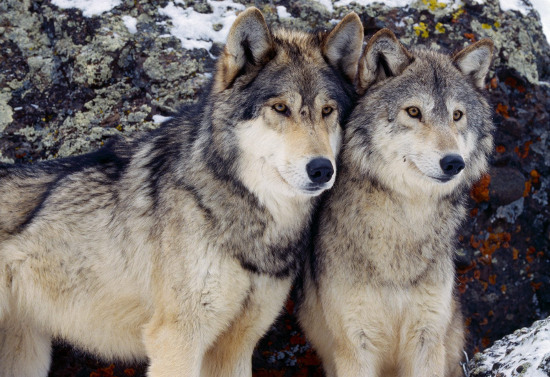Why don't humans tame wolves?
(Why do wolves forever be wild animals, while dogs can be domesticated?)
>>>The little-known facts about wolves
Dogs and wolves have very similar genomes, which makes it difficult for biologists to understand why wolves are still wild, while dogs may be willing to be "the best friend of human".
Currently, doctoral studies conducted by evolutionary biologist Kathryn Lord at the University of Massachusetts Amherst show that different behaviors between dogs and wolves are related to the earliest sensory experiences of animals. This and the important period of socialization. Details of this study are presented in Ethology magazine.
To this day, scientists also know very little about the sensory development of baby wolves, and assuming it is often extrapolated from what humans already know about dogs, Lord explains. This may be reasonable, except that scientists already know there is a significant difference in the early development of baby wolves and puppies, mostly during the time of walking, she added.
To clarify this, she studied the reaction of seven baby wolves and 43 puppies with both familiar smells and new smells, sounds and visual stimuli, conducted them every week, and realize they have developed their senses at the same time. However, her research also reveals new information about how the two subspecies of Canis lupus experience their environment in a four-week development window called the critical socialization period and those. New events can significantly change the understanding of the evolution of wolves and dogs.

When the 'socialized window' opens, puppies and baby wolves start to walk and explore without fear and will retain their familiarity throughout their lives with the things they come into contact with. Domestic dogs can get to know people, horses and even cats at this stage and be comfortable with them forever. But with development, fear increases and after closing windows, new attractions, new sounds and smells will elicit a fearful response.
Through observation, Lord asserted that both dogs and wolves develop olfactory at 2 weeks of age, listen at 4 weeks of age and develop vision at an average of about 6 weeks of age. However, these two subspecies fall into an important socialization stage at different ages. Dogs start a 4-week period, while wolves start at 2 weeks of age. So the way each subspecies experiences the world during those important months is very different, and seems to lead to different development paths, she said.
Lord first announced that baby wolves haven't opened their eyes and haven't heard them when they start walking and exploring their surroundings when they are two weeks old."Nobody knows this about wolves, when they start exploring, they have not opened their eyes, cannot hear, and at this stage they explore the environment primarily based on smell, so this is very interesting" , she noted.
She added: "When the wolf first heard, they were afraid of sounds at first, and when they first saw them they were also afraid of new visual stimuli. When each sense involved in the cognitive process , baby wolves undergo a new round of sensory shocks that puppies are not like. "

Meanwhile, the puppies only begin to explore and go after all three senses are auditory, sense of smell and vision has worked. Overall, "The difference between puppies and wolves in their early weeks is quite surprising, showing how they are similar in genetics. Two-week-old puppies are basically unable to stand firm. and walking, but at this age the baby wolf has been able to actively explore, walk strongly with good coordination and start to be able to climb small steps and soil tissues. '
Significant differences in the development process in the experience between puppies and baby wolves have made a clear difference in their relationships with society, especially with humans. This new information will help manage wild wolf populations and imprisoned populations, Lord said.
- Humans and dogs evolved together
- Video: Screen of chasing, killing wolves of the eagle
- How did humans tame cats?
- Wolves outperformed domestic dogs in logic tests
- Little known facts about wolves
- Launched a fight against wolves in Russia
- The truth behind the photo of a humorous wolf population is causing storms to the online community
- The 'werewolf' 100% real version: Extraordinary, aggressive, attacks both polar bears
- Video: The war between wolves and buffaloes
- Europe at risk of radiation radiation
- Decipher the secret that can tame wild animals
- Can domesticated dogs like domestic dogs tame?
 Animal 'suffering' after hibernation
Animal 'suffering' after hibernation Why do goats climb well?
Why do goats climb well? Scientists were surprised to see chimpanzees eating turtles
Scientists were surprised to see chimpanzees eating turtles Giant catfish died deadly due to drought in Thailand
Giant catfish died deadly due to drought in Thailand